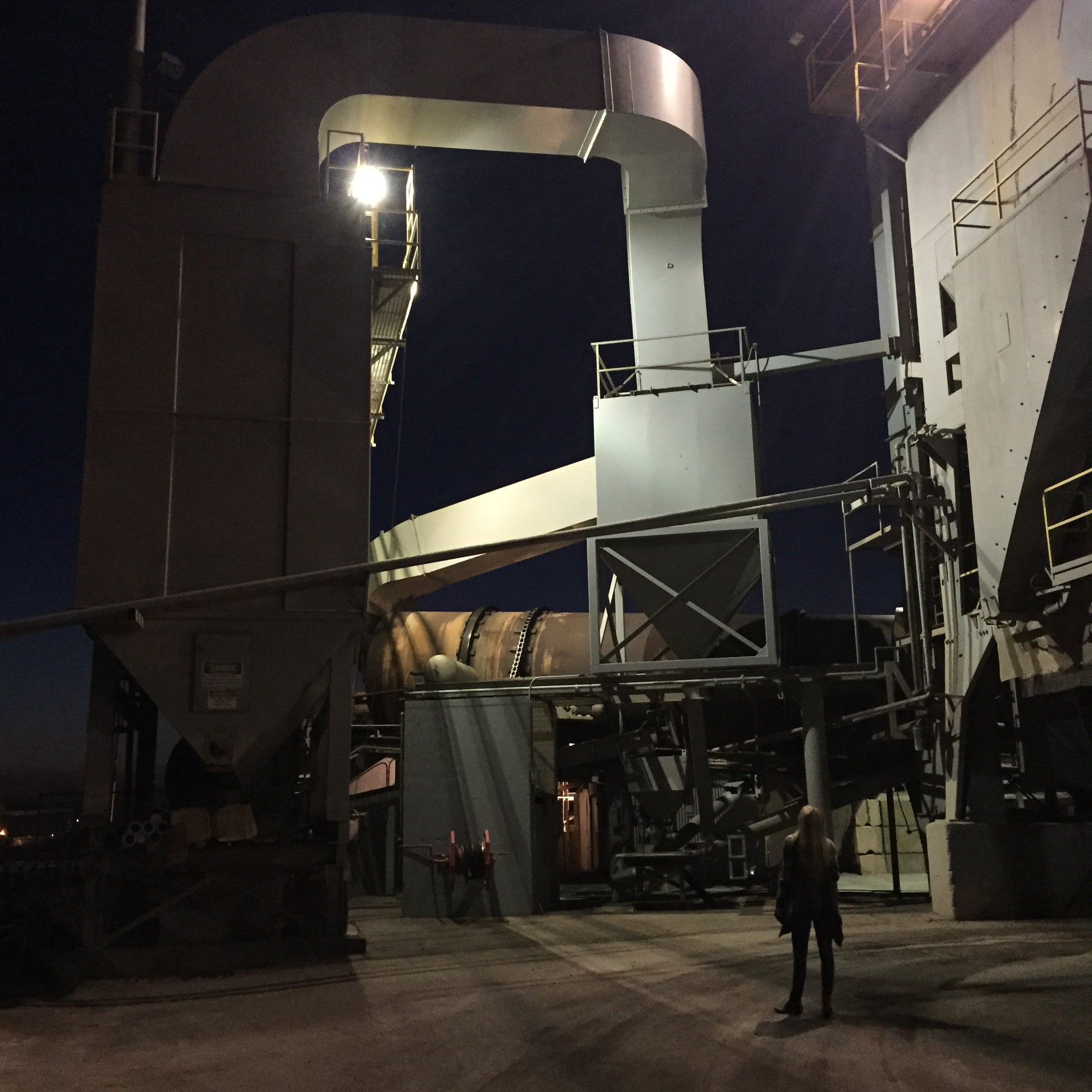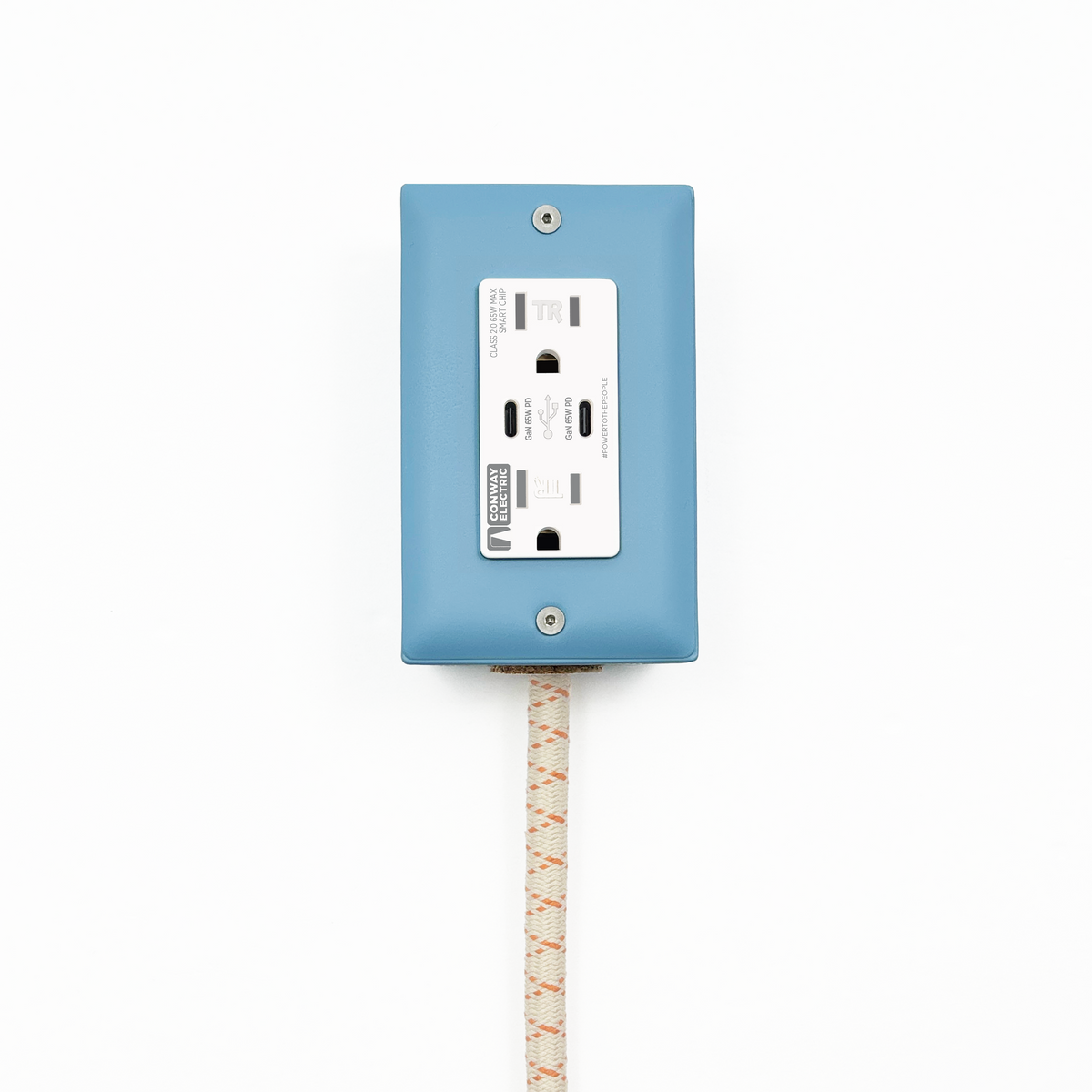The End Of American Manufacturing? - Part II


"American Manufacturing is dead. Long live American Manufacturing."
You're probably looking down at your hand as you read this, at a device more powerful than laptops were 10 years ago, and it might have cost you a few hundred dollars, if anything at all. What Ford and Inland Steel were 75 years ago, Apple and Samsung are today: the hot, high-demand companies selling the stuff we all want.
We have these devices because they're made overseas. And the jobs are there, not here. But they aren't jobs we want for ourselves, our children or grandchildren. The factory workers are lined up by the thousands in heinous conditions, assembling components for pennies-by-the-day. This is not the American dream and this is why America gave up on manufacturing, sort of... We call it In-Between manufacturing. In-Between is a kind of manufacturing that requires a lot of labor. It's not automated and it's not specialized. It's In-Between.
Since labor in America is expensive, factories overseas were happy to take all of our In-Between manufacturing. The companies shipping the jobs overseas were happy to have the extra profit margin. And we all got crappier products.
Automobiles (or most of their parts), furniture, clothing, lumber, light fixtures...all the things that used to be made here are made there. They are some of the objects of in-between manufacturing. And it's mostly gone from the United States, as is the quality (even our handheld devices only last a year or two at best).
Detroit, Philadelphia, St Louis, Cleveland, Pittsburgh, Baltimore, Buffalo, New Orleans, Cincinnati, Boston, Newark, Milwaukee: The cities with the highest loss of manufacturing jobs between 1950 and 2010 all share a similar story. Some even look the same as they did 50 years ago. Their fossils show up as logos in cornerstones of buildings that lost their workers to the kind of work the cheap overseas assembly lines offer every day.


(The Allen Bradley building, Milwaukee, then (1958) and now (2015 Google Maps). Its logo a fossil from the past, preserved in the cornerstone above the doorway under the overhang.)
But manufacturing in America is not dead. Manufacturing in America is alive and sort-of well. Breweries, assembly plants, glassware, a battery factory in Nevada, and thousands more are still doing their thing or just starting up.
But why? In the age of cheap overseas labor, why are there still manufacturers in the United States?
And if there are manufacturers still here, why is it hard to find a manufacturer and build a product everyone needs at a cost where we can sell at a price that everyone can afford, without going to China where even Powerful Chinese entrepreneurs say people in China hate products made in China?
We've learned a lot in the last few months after peering into the abyss looking for answers.
The answer is: American manufacturing is dead. Long live American manufacturing.
All manufacturing was not created equal. There are 3 types of manufacturing: Automated, Specialized and In-Between. Two of the three are still in the United States and the one we need is mostly gone.
"We had to find a solution to work around the limitations of local manufacturing."
Automated manufacturing is how shoelaces, most food, and paper is made: a few employees handling equipment that does most of the work producing huge quantities of goods at low cost. Automated manufacturing stays in America because the labor and other costs are relatively insignificant making overseas manufacturing advantages (cheap labor) less valuable.
Specialized manufacturing provides services to customers in highly-specific industries. The aerospace, defense, geosciences, medical and other niche markets can pay high prices to manufacturers and charge a lot for their goods or services. Specialized manufacturing stays in America because it can absorb the labor cost within expensive products. Most of our factory partners are in this category and this is our biggest problem in Seattle.
In Seattle most factories are job shops (small, specialized factories producing low-volume/high cost components) servicing Boeing, Microsoft, Amazon or other customers that pay very high prices for smallish runs of product. They could squeeze in small runs of our product between their primary business but as our business grows they couldn't shift their focus to servicing our higher-volume, lower-price products. The more time we took up in their factories the more they would have to charge us.
We had to find a solution to work around the limitations of local manufacturing.
Our products require in-between manufacturing. These are the lost jobs America lacks. These are the factories that are hard to find.
But we haven't shipped our production overseas yet because after we got slugged by our 3 factory partners a few months ago we decided not to hide from the problems but to dig in, hunker down and see how we could do better. It worked.
We learned why our suppliers are hesitant to take on companies with growing volumes: their existing businesses don't allow for in-between manufacturing. They're weary of taking on new customers who may ship the manufacturing overseas - that's what most companies do as they gain traction.
But Conway Electric is different. Actually, over the past few months we've grown and our hope is that with greater velocity we can create greater value and build more jobs and offer more work on-shore. We're doing this by creating better supplier relationships while figuring out how to integrate some automation and make our manufacturing process more efficient.
Our growth is the only way we're able to survive while keeping manufacturing in the United States. By showing our manufacturing partners the growth over the past year and showing them how they can build a solid business with us as an ongoing customer, we were able to convince all 3 suppliers to keep our business while working more closely in the future.
And it wasn't easy.
We had to bounce around trying to change things until we found the right partners who would listen.
1. First we met with the owners - we asked our contacts at each supplier factory for sit down meetings with the owners or upper management. In today's digital/text messaging/emailing world nothing replaces face to face meetings and personal relationships. It's the only thing that matters.
2. We recapped the business - we presented information on how our company has grown over the past year and where we expect it will be in the next year. Growth means opportunity and opportunity means business.
3. We are staking our claim - we recently instagrammed a photo of our first granted patent we received from the USPTO in printed form. In addition to our granted patents we have more than 7 new pending patents and a few trademarks with more being filed each month. By showing our partners we are serious about the commitment to the product category they understand they are positioned to become longer term partners as we grow, protected by our intellectual property.
4. We had to show them the money - on the phone recently a new supplier said "we love new ideas and small companies. One of our customers does $millions in business with us each year and they started in a basement in the 1960s when our company was brand new. We see the potential". If we do an opening order with the supplier we may order more than we need up front, taking some inventory risk - we aren't penny shy and pound foolish and we expect fair prices. We'll also execute supply agreements with the factories so we know upfront what prices they will charge and they know we're committed for a certain period of time.
5. We searched for new suppliers - reaching out to new suppliers who better understand the needs of a new business is critical as a business grows. This means a lot of time on the phone and on sourcing websites or through other company referrals. Ultimately great suppliers can make or break your business so work hard to find them and be sure their work is tested. Quality before quantity is key. Pro tip: find the suppliers who are also hungry for growth. If they're stagnant and happy, you'll likely never get along well enough to grow.
6. We leverage technology - by using technology to remove middle men from processes we're able to grow retail and manufacturing relationships using existing platforms. Dropbox, Quickbooks online, some other software and APIs connecting them together helps communication without burdensome cost and almost zero setup time.
7. We got certified - we tout our Underwriters Laboratories listing. This is a time and fee-intensive process, but also shows our suppliers that we're committed to working with them. By achieving UL Listing and extending coverage to our suppliers (and working with them to be sure they're certified) they know we're committed to staying with them.
8. We came up with new ideas - every day we think of new products we can offer, new ways we can grow and how to be more creative. We don't keep these ideas for ourselves. We share the ideas with our factories, our customers and you - sometimes in blog posts, often with everyone on Instagram.
By pursuing each step simultaneously we've been able to close deals with larger retailers while improving relationships with our suppliers, giving us some stability for the foreseeable future. Our IP portfolio is helping us build protection around our ideas, and that also protects the manufacturers.
We have a long way to go before we're a stable business. Right now it's still a small group of people who are committed to building a business in the United States with the belief that we will eventually give back all that we are able to achieve.
Every one of our products sold represents our belief that people care about Made In America. It represents an opportunity and empowerment. It means hope and possibility. It's one unit further away from failure.
But the real power is yours. We rely on you to love our products, to give us feedback and ideas, to share our company with your friends and buy our products as gifts. Without you we are nothing and we are grateful for your support.
Ideas? Feedback? Let us know in the comments below. We'll keep you posted as we continue our journey.
#PowerToThePeople
Leave a comment
Comments will be approved before showing up.




